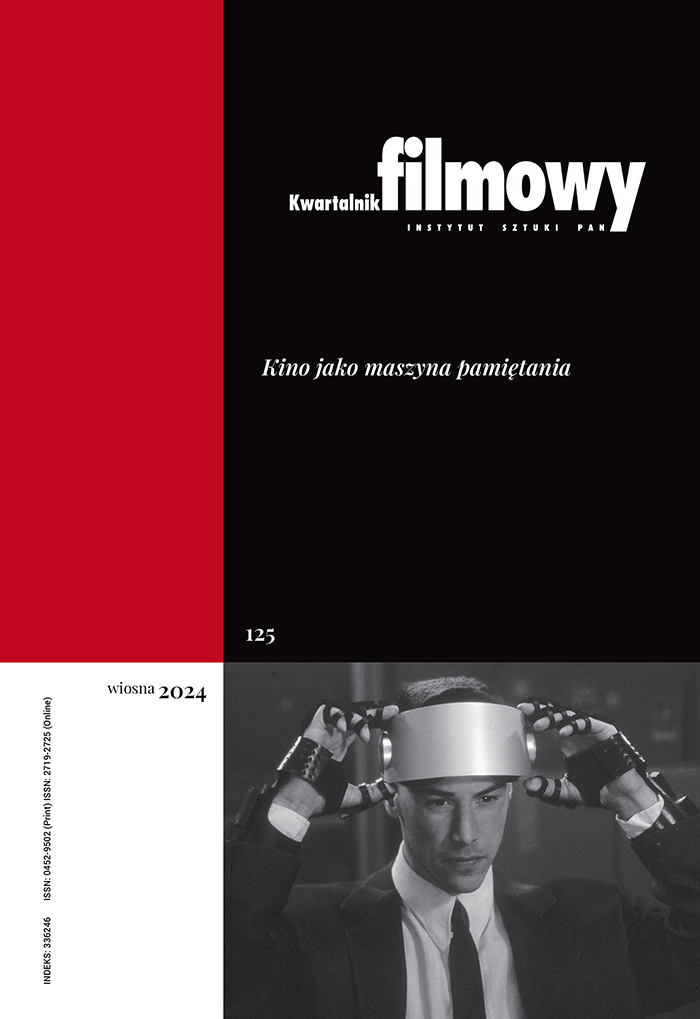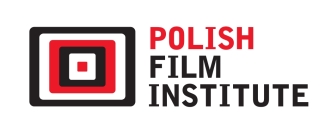Animation – Abstraction: The Birth of a New Art
Abstract
Giżycki notes that abstract film is almost as old as abstract painting. In the years 1910-1912 Arnaldo Ginna and Bruno Corra (brothers Corradini) were experimenting with colour “symphonies” and “sonatas”, or sequences of images painted with transparent paints directly on film. none of these reels survived, but thanks to detailed descriptions one can imagine them and consider them to the first abstract films. Giżycki also calls upon other artists who planned to make similar films (e.g. Pablo Picasso), and even prepared preparatory drawings and made some theoretical arguments (Leopold Survage). The author also argues that from the very beginning abstract film was conceptually tied with music. In the second part of the article the author presents the achievements of Viking Eggeling in the area of abstract film and the complicated story of his co-operation with Hans Richter. In the essay we also come to know about Walter Ruttmann who developed his version of abstract film independently from Eggeling and Richter. The author concludes his reflections with an argument that the struggle with this paint-film-abstract art form continues from the first experiments of Corradini brothers until now, and that today computers opened new and unexplored possibilities for artists.
Keywords:
abstract film, Arnaldo Ginna, Bruno Corra, Pablo Picasso, Léopold Survage, Viking Eggeling, Walter Ruttmann, Hans RichterReferences
Art in Cinema, red. F. Stauffacher, San Francisco 1947, s. 50.
Google Scholar
Berlewi Henryk, Viking Eggeling i jego abstrakcyjno-dynamiczny film, Albatros” 1922, wrzesień, tłum. w: M. Giżycki, Walka o film artystyczny w międzywojennej Polsce, tłum. z jidysz Z. Bargielski, Warszawa 1989, s. 118-119.
Google Scholar
Cendrars Blaise, La parturition des couleurs, „La Rose Rouge”, przedruk w: Survage – rythmes colorés, 1912-1913, Saint-Etiene 1973 (katalog wystawy).
Google Scholar
Corra Bruno, Muzyka chromatyczna (1912), tłum. W. Jur, „Film na świecie” 1986, nr 325-326, s. 86-88.
Google Scholar
Diebold Bernhard, Eine neue Kunst. Die Augenmusik des Films, „Frankfurten Zeitung” 2 IV 1921.
Google Scholar
Diebold Bernhard, Expressionismus und Kino, “Neue Zuricher Zeitung”, 27 VII 1916.
Google Scholar
Doesburg Theo van, „De Stlij” 1921, nr 5, lipiec; przedruk w: Film as Film: Fotmal Experiment In film, 1910-1975, katalog wystawy w Hayward Gallery, London 1979, s. 74.
Google Scholar
Eggeling Viking, Elvi fejtégetesek a mozgómüveszütről, „MA” 1921, nr 8, s. 105-106
Google Scholar
Eggeling Viking, Teoretyczna prezentacja Sztuki Ruchu, „Kwartalnik Filmowy” 1995, nr 11, s. 84-86.
Google Scholar
Film als Film. 1910 bis heute, red. B. Hein i W. Herzogenreth, Köln 1978, s. 57.
Google Scholar
Giżycki Marcin, Sny, które można kupić za pieniądze, „Kwartalnik Filmowy” 2006, nr 54-55, s. 344-349.
Google Scholar
Goergen Jeanpaul, Walter Ruttmann. Eine Dokumentation, Berlin 1990.
Google Scholar
Hoffmann Justin, Hans Richter: Constructivist Filmmaker, w: Hans Richter: Activism, Modernism, and the Avant-Garde, red. S. C. Foster, Cambridge 1998, s. 72-91.
Google Scholar
Kahnweiler Daniel-Henry, The Rise of Cubism, New York 1949, s. 22.
Google Scholar
Lawder Standish D., The Cubist Cinema, New York 1975, s. 56.
Google Scholar
Marinetti Filippo T., Arnoldo Ginna, Kinematografia (1938), tłum. W. Jur, „Film na Świecie” 1986, nr 325-326, s. 75.
Google Scholar
Moritz William, Abstract Film and Color Music, w: The Spiritual in Art: Abstract Painting, 1890-1985, red. M. Tuchman, J. Freeman, Abbeville Press, Los Angeles 1999, s. 60, 300.
Google Scholar
O’Konor Louise, Viking Eggeling, 1880-1925, Artist and Film-Maker: Life and Work, Stockholm 1971, s. 133.
Google Scholar
Ozimek Stanisław, Viking Eggeling i jego Symfonia Diagonalna (1924), „Kwartalnik Filmowy” 1995, nr 11, s. 71-80.
Google Scholar
Richter Hans, Hans Richter, Neuchâtel 1965, s. 37-38.
Google Scholar
Richter Hans, Prinzipielles zur Bewegungskunst, „De Stijl” 1921, nr 4, s. 109-112.
Google Scholar
Ruttmann Walter, Malerei mit Zeit, rękopis datowany na lata 1919/1920, przedruk w: Goergen, Walter Ruttmann. Eine Dokumentation, Berlin 1990, s. 74.
Google Scholar
Stoltenberg Hans L., Reine Farbkunst in Raum und Zeit, und ihr Verhältnis zur Tonkunst, Leipzig 1920.
Google Scholar
Survage Léopold, Le coleur, le mouvement, le rythme, tekst złożony 29 VI 1914 w Académie des Sciences w Paryżu, przedruk w: Survage – rythmes colorés, 1912-1913, Saint-Etiene 1973 (katalog wystawy).
Google Scholar
Survage Léopold, Le rythme coloré, Le Soirees de Paris”, 1914, nr 26-27, przedruk w: Survage – rythmes colorés, 1912-1913, Saint-Etiene 1973 (katalog wystawy).
Google Scholar
Z dr Louise O’Konnor, historykiem filmu, profesorem Uniwersytetu Sztokholmskiego, rozmawia Stanisław F. Ozimek, „Kwartalnik Filmowy” 1995, nr 11, s. 81-83.
Google Scholar
Authors
Marcin Giżyckikwartalnik.filmowy@ispan.pl
Rhode Island School of Design United States
Krytyk i historyk sztuki. Wykładowca w Rhode Island School of Design w USA. Opublikował m.in. Słownik kierunków, ruchów i kluczowych pojęć sztuki drugiej połowy XX wieku (2002), Wenders do domu! Europejskie filmy o Ameryce i ich recepcja w Stanach Zjednoczonych (2006).
Statistics
Abstract views: 69PDF downloads: 17
License
Copyright (c) 2010 Marcin Giżycki

This work is licensed under a Creative Commons Attribution 4.0 International License.
The author grants the publisher a royalty-free non-exclusive licence (CC BY 4.0) to use the article in Kwartalnik Filmowy, retains full copyright, and agrees to identify the work as first having been published in Kwartalnik Filmowy should it be published or used again (download licence agreement). The journal is published under the CC BY 4.0 licence. By submitting an article, the author agrees to make it available under this licence.
In issues from 105-106 (2019) to 119 (2022) all articles were published under the CC BY-NC-ND 4.0 licence. During this period the authors granted a royalty-free non-exclusive licence (CC BY-ND 4.0) to use their article in „Kwartalnik Filmowy”, retained full copyright, and agreed to identify the work as first having been published in our journal should it be published or used again.
Most read articles by the same author(s)
- Marcin Giżycki, „L’âge d’or” – the Masterpiece of Provocation , Kwartalnik Filmowy: No. 109 (2020): Architectural Space in Film
- Marcin Giżycki, Why I Do Not Like Advertising in the Cinema , Kwartalnik Filmowy: No. 105-106 (2019): Cinema and Political Transformation
- Marcin Giżycki, … Only Stills Remained: Nonexistent Films of Cindy Sherman , Kwartalnik Filmowy: No. 115 (2021): Form Film, Content Film
- Marcin Giżycki, Smartphone – The Triumph of Eisenstein , Kwartalnik Filmowy: No. 112 (2020): Polish Documentary, Polish Animation
- Marcin Giżycki, The Revenge of Joker and Parasites , Kwartalnik Filmowy: No. 108 (2019): Film Production and Distribution
- Marcin Giżycki, The King/Queen of Camp , Kwartalnik Filmowy: No. 107 (2019): Journey, (E)migration, Pilgrimage
- Marcin Giżycki, The Chronology of the Life and Work of Zenon Wasilewski , Kwartalnik Filmowy: No. 112 (2020): Polish Documentary, Polish Animation
- Marcin Giżycki, Tucker and Others , Kwartalnik Filmowy: No. 110 (2020): Beyond Human Being
- Marcin Giżycki, Tamara Sorbian-Kasprzycka, 1952-2020. In Memoriam , Kwartalnik Filmowy: No. 112 (2020): Polish Documentary, Polish Animation
- Marcin Giżycki, May an Artist Be a Criminal? A Few Questions Without Answers , Kwartalnik Filmowy: No. 113 (2021): Film and Technology











